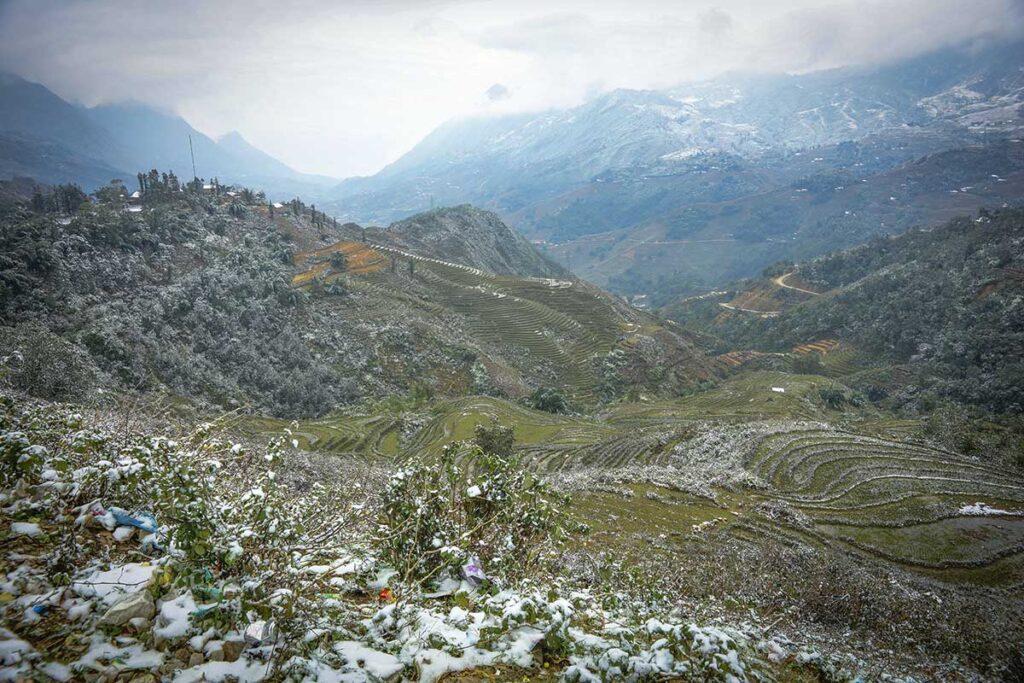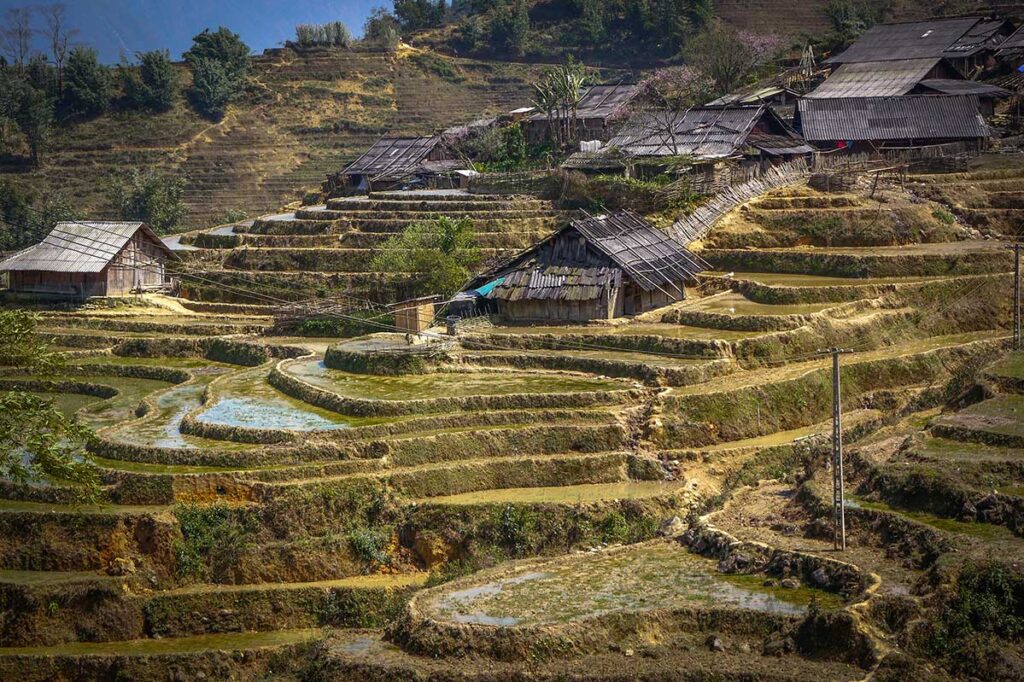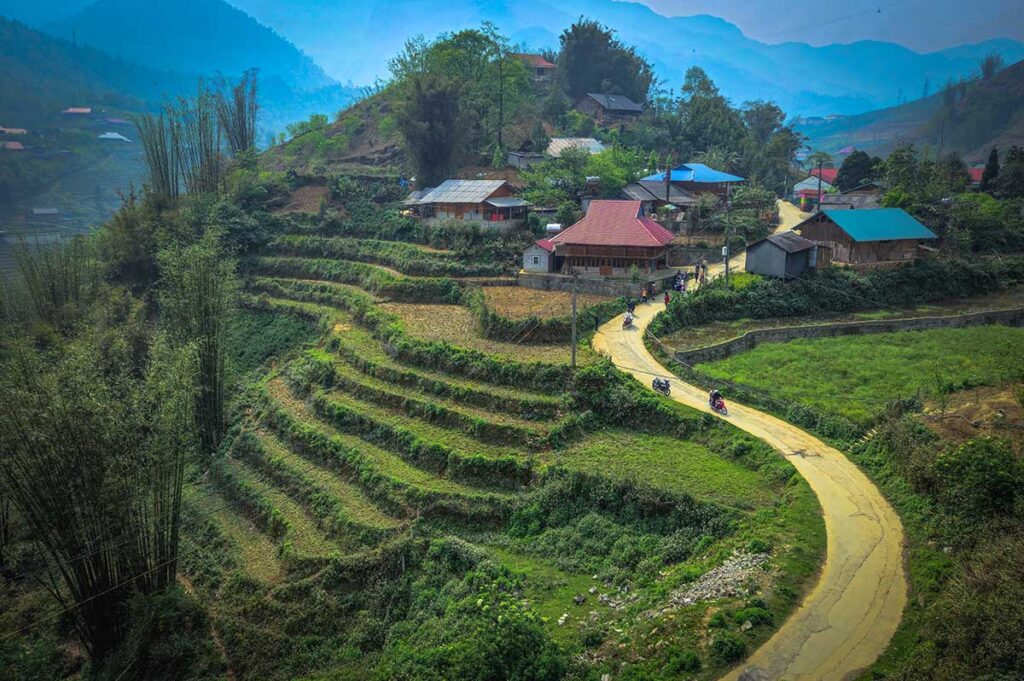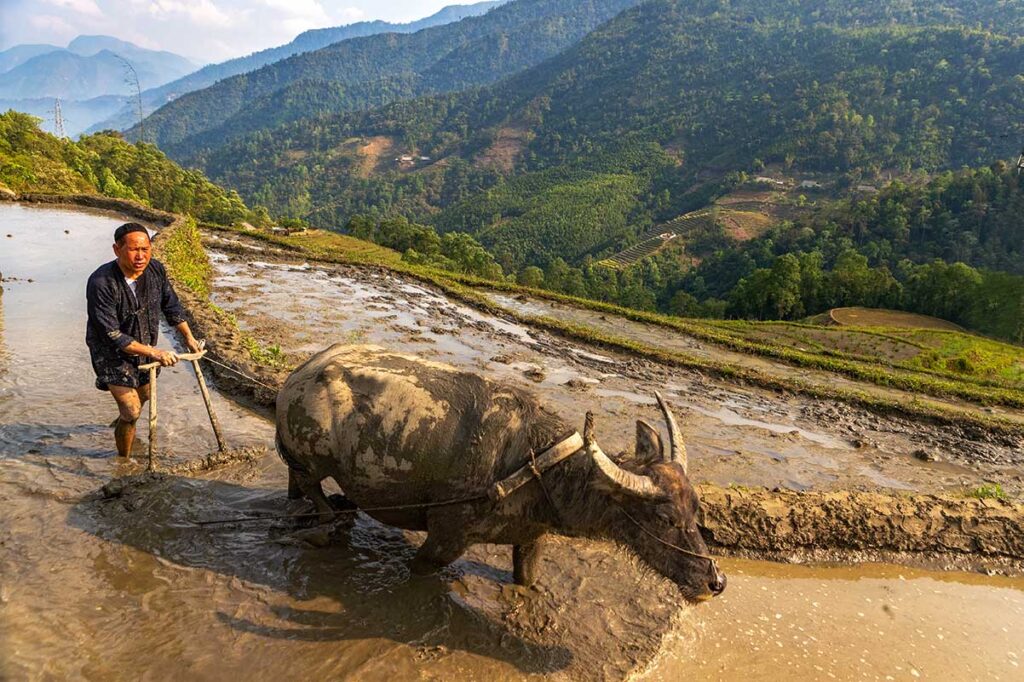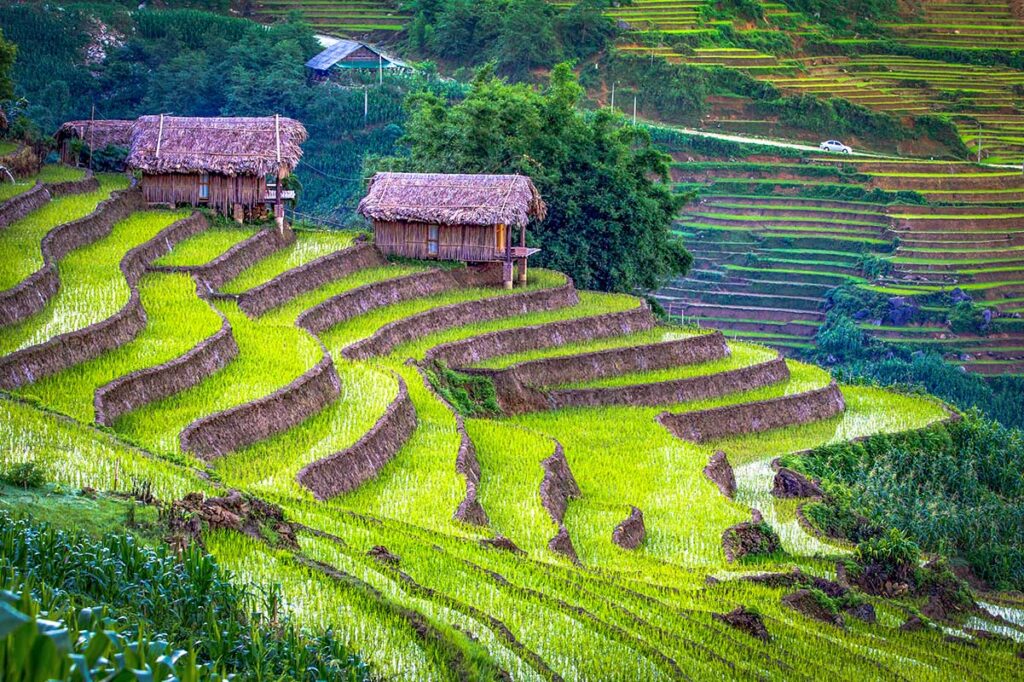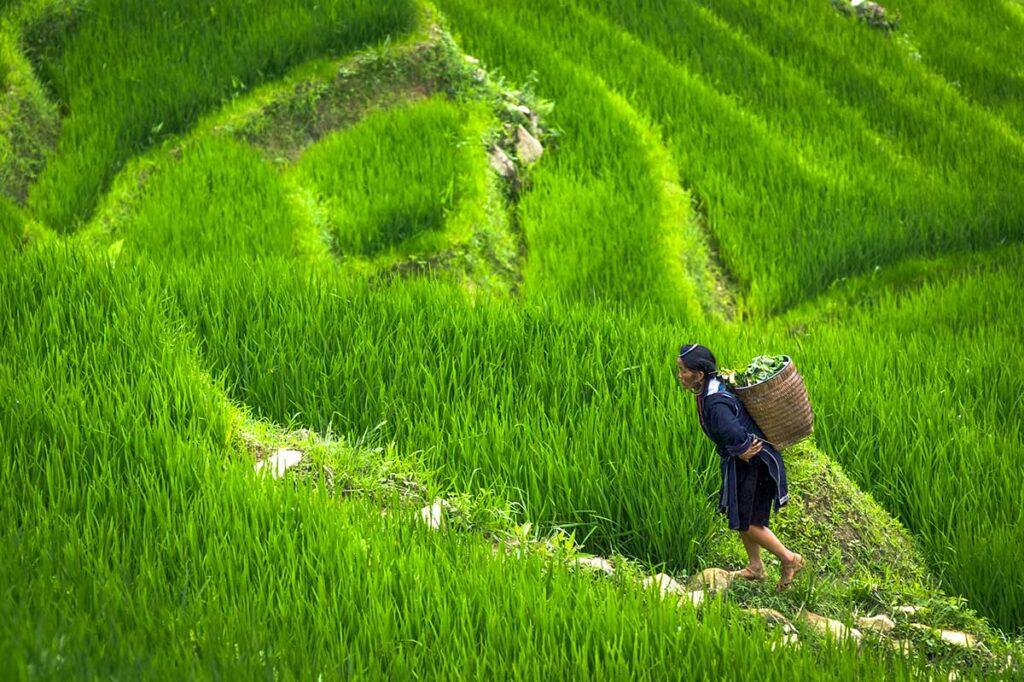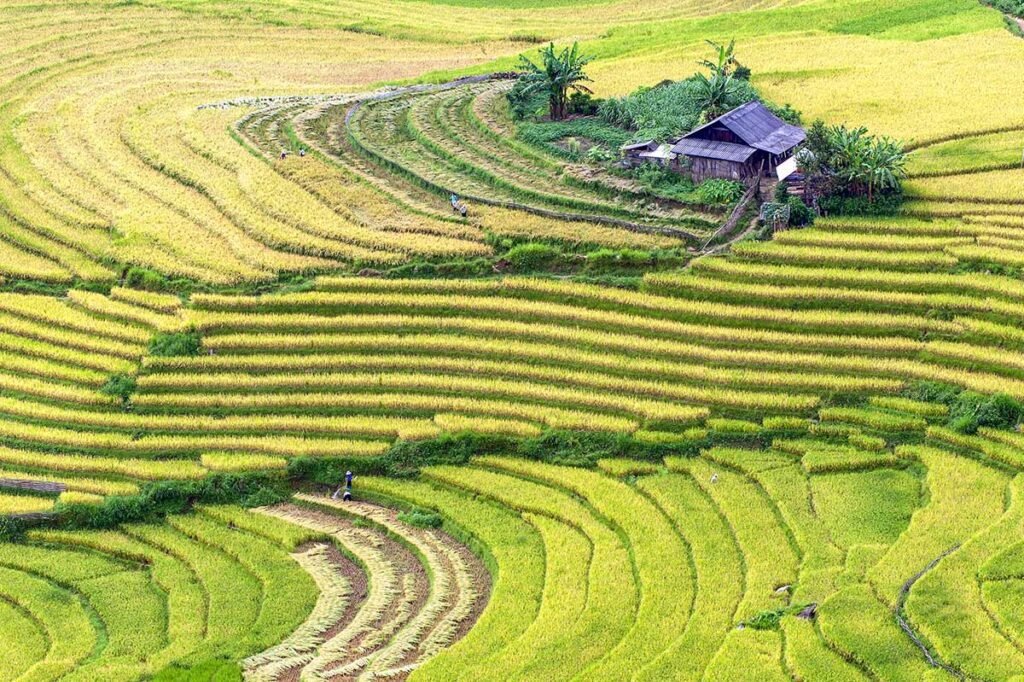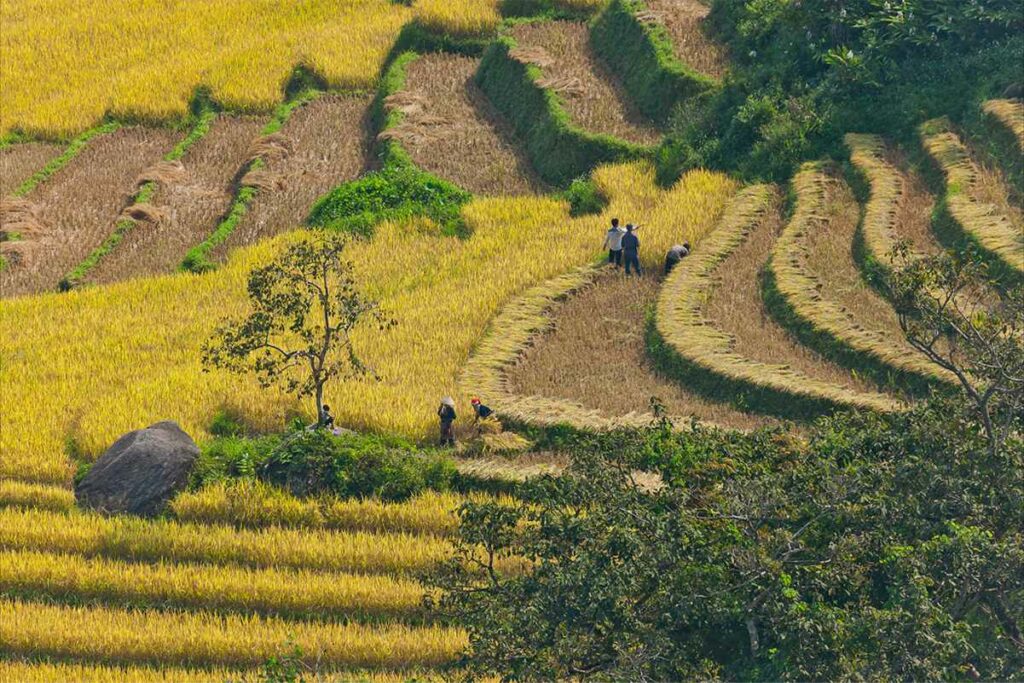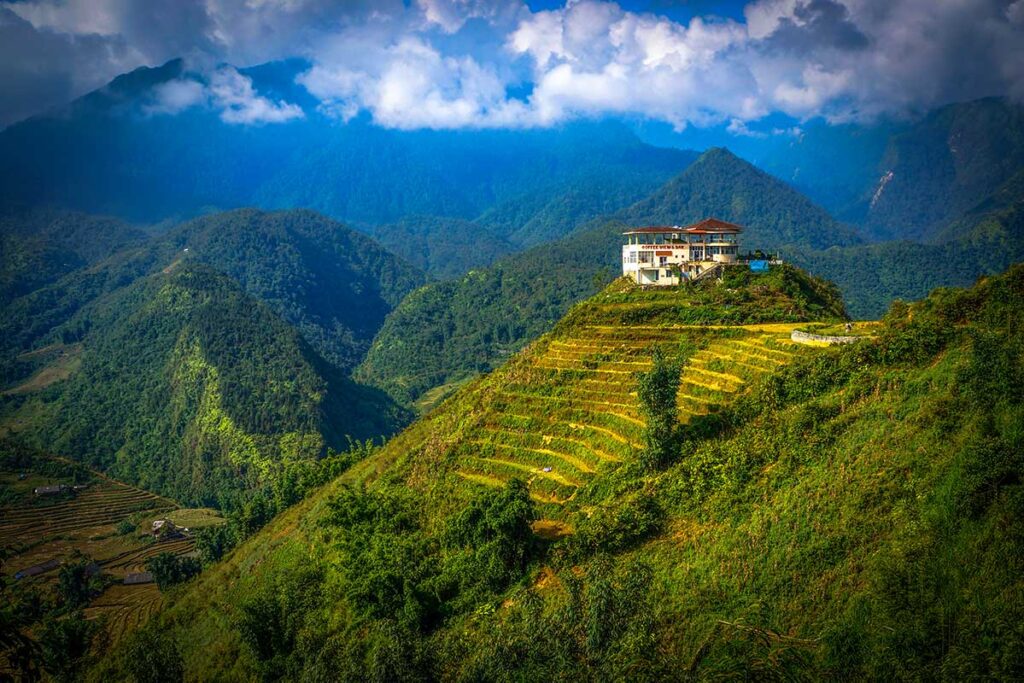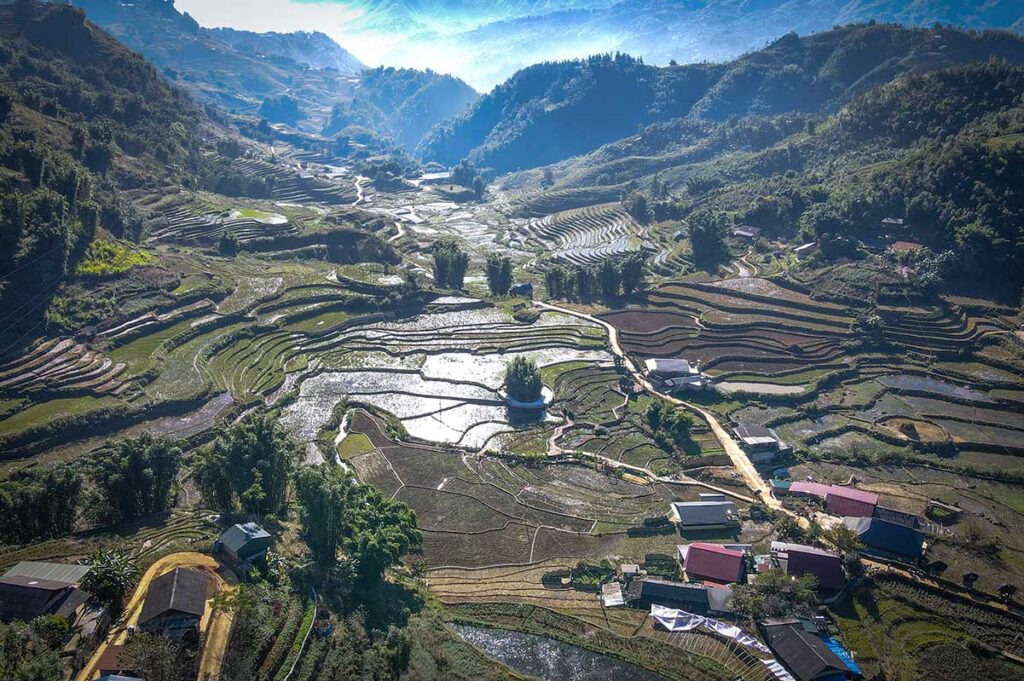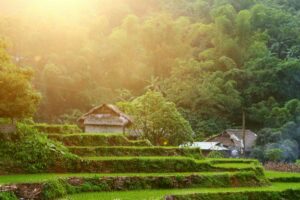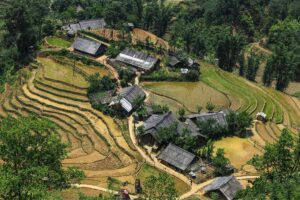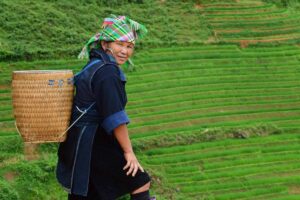A trekking in Sapa through the rice fields, mountains and forests is one of the highlights of a trip in Vietnam. Visit local minority villages and see the beautiful surroundings. Trekking in Sapa is an experience that you will not soon forget. Read this guide to help you on your way to choosing the right trek that meets all your needs and to prepare you for a great trek.
- What to experience during a trekking in Sapa
- How to plan your trekking in Sapa
- Finding the best Sapa trekking tour
- How to prepare for your trekking in Sapa
- Tips for during your trekking in Sapa
What to experience during a trekking in Sapa
Before we dive into our tips and guide about trekking in Sapa, let’s explore why this is the best activity to do in Sapa, and possibly all of Vietnam.
Trekking through Sapa’s terraced rice fields

The biggest reason for people to do a trekking in Sapa is seeing the iconic terraced rice fields that stretch as far as the eye can see. These fields, carved into the mountainsides by local farmers, change with the seasons, offering a different kind of beauty throughout the year.
Exploring the nature of Muong Hoa Valley

A trekking will take you through the diverse and stunning nature of Muong Hoa Valley. You’ll hike through the majestic mountains of Hoang Lien National Park, cross over crystal-clear streams, and wander through dense bamboo forests.
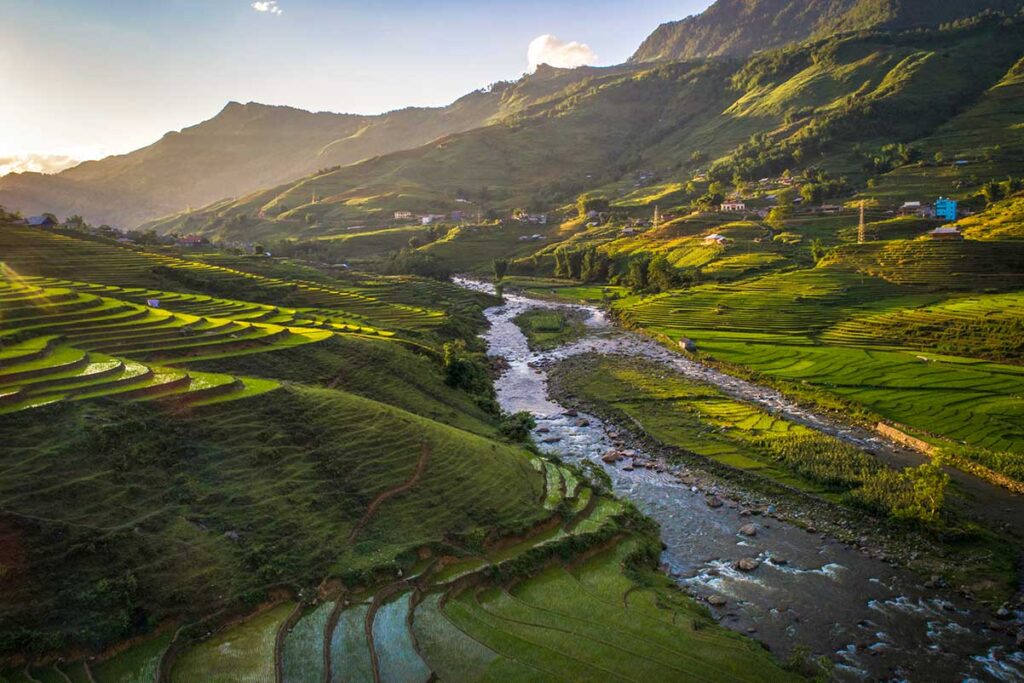
Every turn reveals a different aspect of Sapa’s natural beauty, from serene waterfalls to expansive views of the valley. The diverse landscapes and unspoiled nature make it an ideal spot for both nature enthusiasts and photographers.
Meeting ethnic cultures
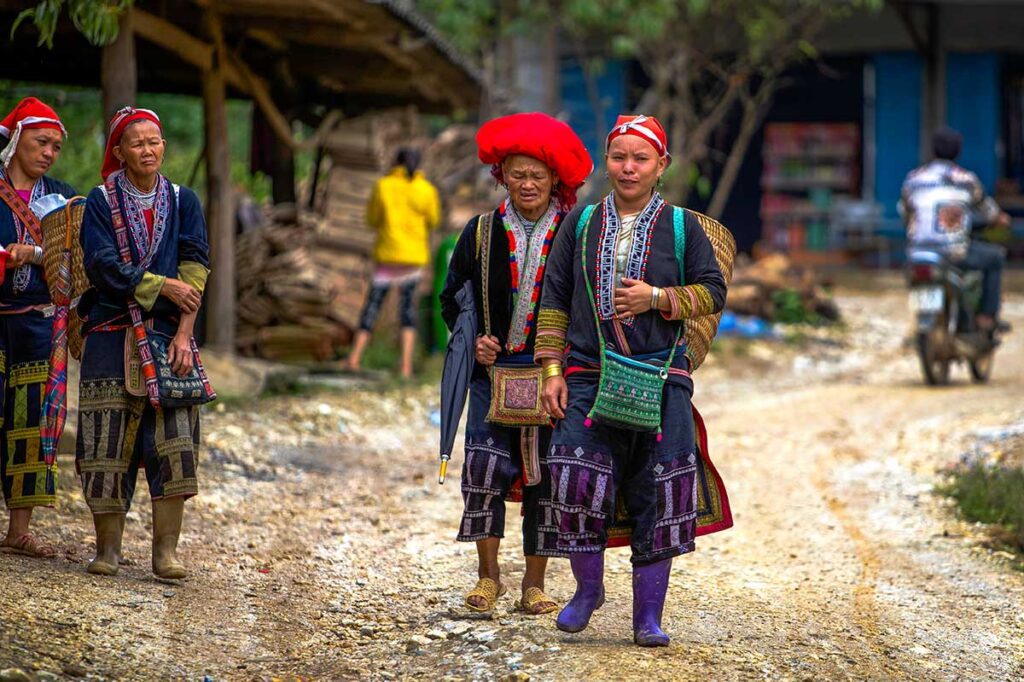
Trekking in Sapa isn’t just about the landscapes; it’s also about connecting with the people who call this region home. Encounter the Hmong, Dao, Tay, and Giay ethnic groups, each with their own unique customs, traditions, and colorful clothing. Visit their villages and learn about their way of life. You’ll see their traditional houses and intricate handicrafts, it feels like stepping back in time. The colorful clothing and warm hospitality of these communities add a deeply personal and cultural experience to your trekking.
Staying in family homestays
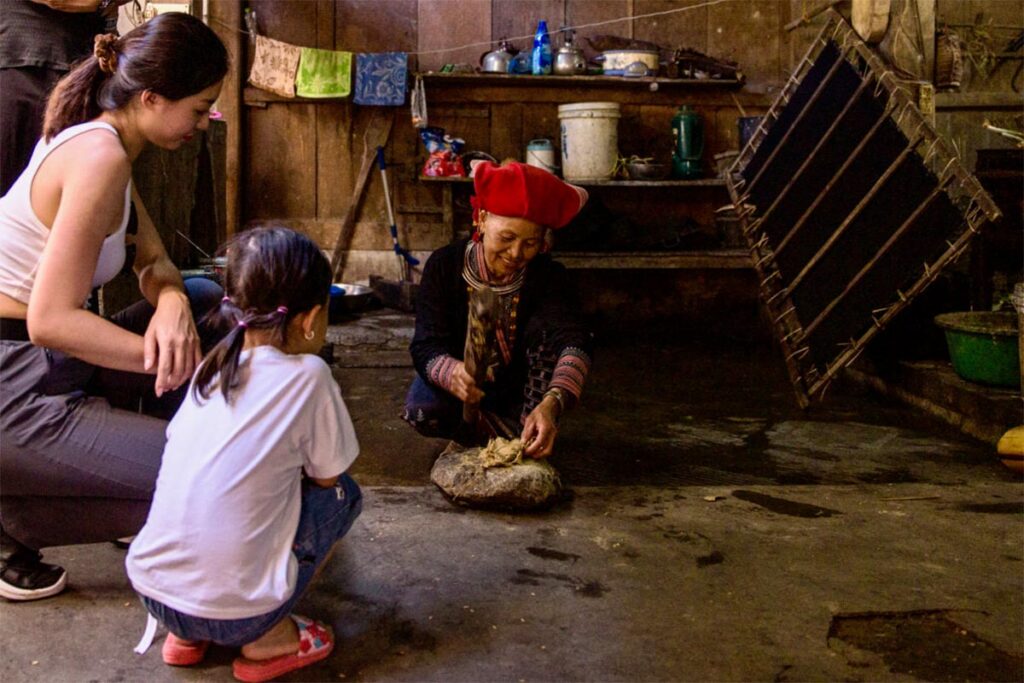
To make your trekking experience even more memorable, spend a night in a local homestay. These family-run accommodations offer a glimpse into the daily lives of the ethnic people. You’ll enjoy home-cooked meals prepared over an open fire, share stories around the dinner table, and maybe even relax with a traditional herbal bath. While homestays are often basic, the authenticity and warmth of your hosts will make it an experience you’ll cherish forever.
How to plan your trekking in Sapa
This section provides essential Sapa trekking tips to help you plan your adventure effectively.
1. Best time to go trekking in Sapa
The best time to go trekking in Sapa depends on the month, as the views and conditions change throughout the year. The iconic images of lush, long rice fields aren’t visible all year round. Here’s an overview:
* = Best Sapa trekking conditions
** = Most stunning time of the year to visit Sapa
2. How to get to Sapa
Before you pick your trekking in Sapa, figuring out how to get there is the first step. Depending on your choice of transportation, it will affect how much time you have in Sapa for trekking and other activities. Sapa is about 5 to 6 hours by bus from Hanoi, so for a round trip, you might lose a day of traveling unless you travel at night. Here are your options:
Limousine bus: Super comfortable and cheap with VIP-like seats. The ride takes around 5 hours from Hanoi to Sapa and operates during the day. This means, you will have a comfortable ride, but loose day time traveling.

Sleeper bus: Available in standard and VIP options. The VIP sleeper buses offer more space and privacy for a slightly higher cost. Traveling at night allows you to arrive in Sapa early, maximizing your time. However, not everyone finds it easy to sleep on these buses, and there are safety concerns.
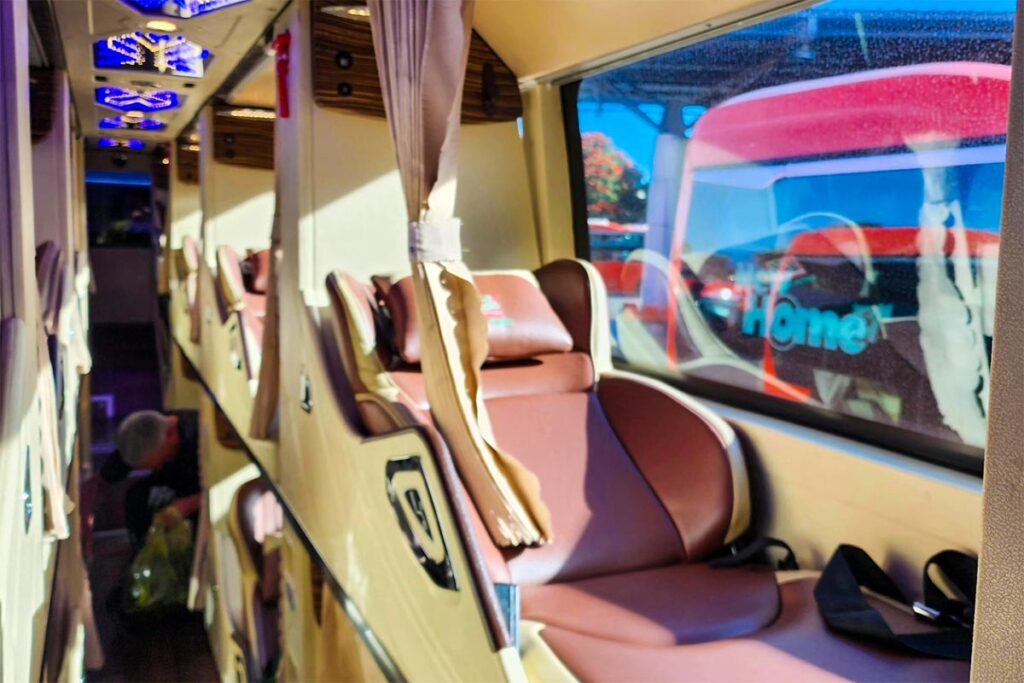

Sleeper trains: More expensive than buses but safer and more comfortable. The journey includes a transfer from Lao Cai Train Station to Sapa. Tourist trains are clean and well-equipped, offering a unique and enjoyable experience despite the bumpy ride.
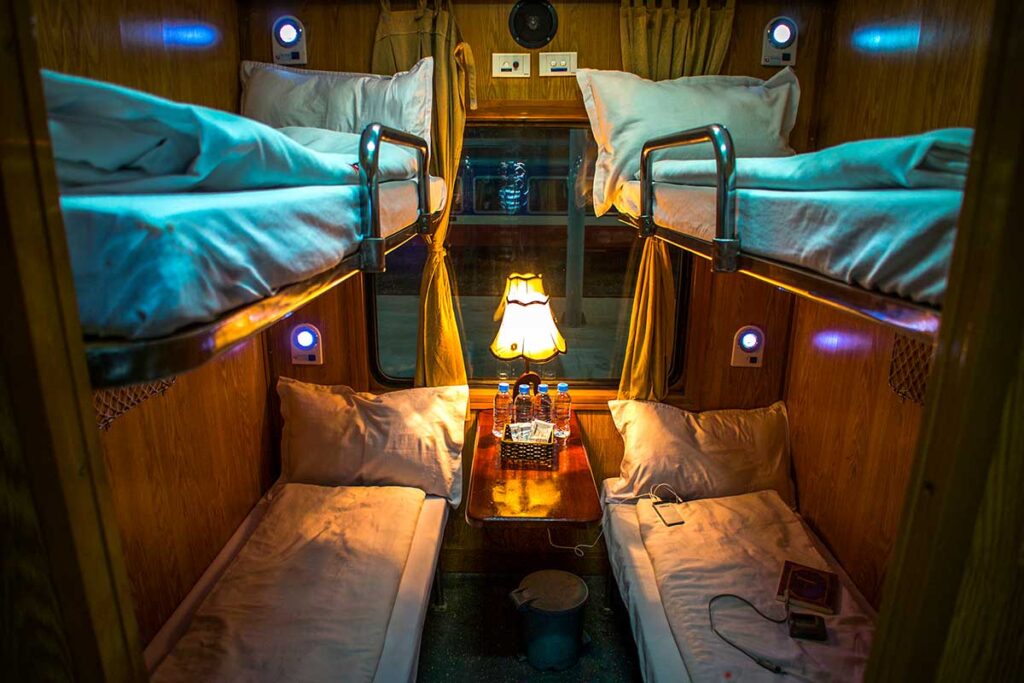
Finding the best Sapa trekking tour
3. Guided vs. self-guided trekking
Can you do a trekking in Sapa by yourself? Yes, but with conditions. Trekking routes in Sapa are not well-marked trails with signs and distance markers like in Europe or the US. The area is inhabited by ethnic people who often don’t speak English. Trekking routes are far from the main town of Sapa, and many routes are not loops, so you either have to walk a long way back or arrange a pick-up, which can be difficult.
However, you can use the main roads connecting the villages in Muong Hoa Valley. Many of these roads are on navigation apps. Start with a taxi ride to the end of your route so you can walk back to Sapa town.
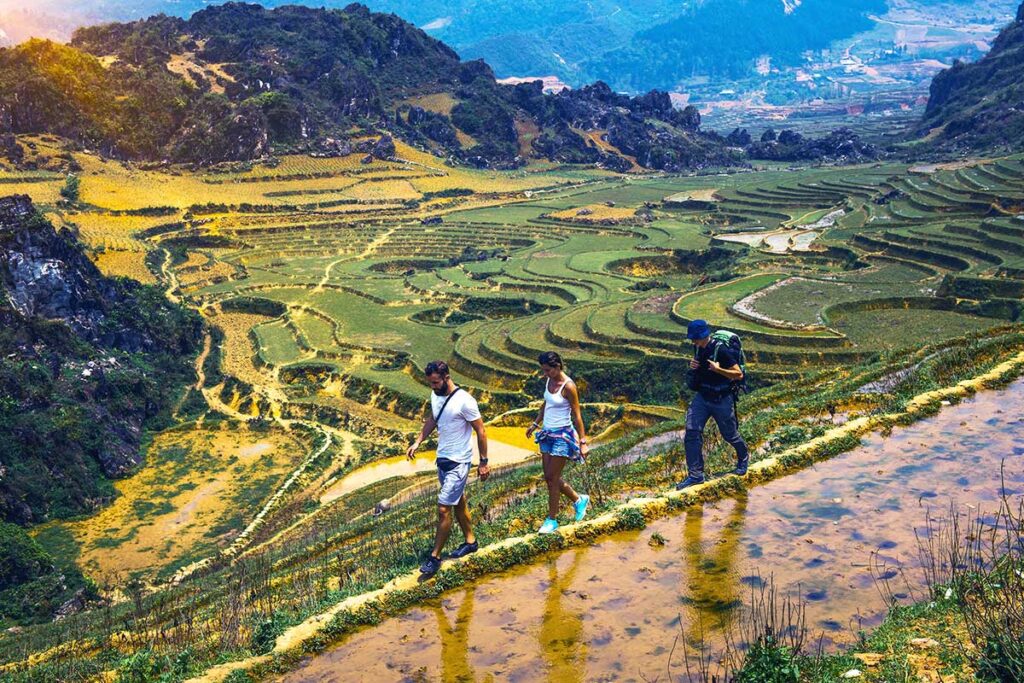
Trekking with a guide has many benefits. Guides know the best areas and viewpoints, can help you connect with locals, arrange meals, pick-ups, overnight homestays, and can take you off the main roads into the terraced rice fields, along streams, and through forests.
4. Private or group trekking
You can choose between a private tour or a group tour.
Group tours: Often small groups, around 10 people. Benefits include socializing and lower costs. Short Sapa trekking tours start from $10. Group tours often follow a few routes through the most popular areas, so there’s less opportunity to explore off the beaten path.
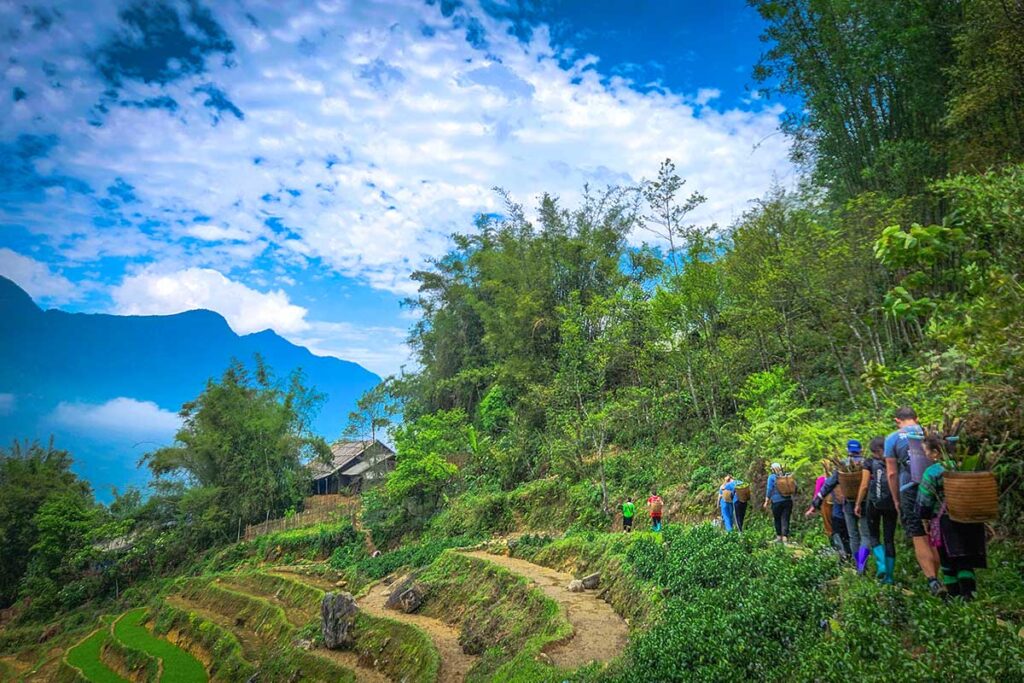
Private trekking: Ideal for those who want to go off the beaten track, take their time walking, take photos, or may not be able to walk fast. Private tours can be customized with distance and difficulty level and offer flexibility during the trek with pick-ups or special meal requests if needed.
5. Choosing the right duration for your trek
Trekking tours range from half a day to three days or more.
Half a day: Offers a good feel for the area. You stay mostly on beaten roads and more touristy areas but will see villages and stunning views. Good option if you can’t walk too much but still want to experience trekking.
Full day: Provides more options. You can choose between trekking remote areas or more known routes. You’ll have plenty of time to enjoy the beautiful rice fields and local minority villages. After the trek, you can return to a comfortable hotel.
Multi-day trekking: From two to three days or even longer. This is the best and most recommended option. You stay overnight in local homestays, learning from a local family of ethnic people and seeing how they live. The second or third day will take you further from the beaten track where no other tourists come.

6. Picking the right difficulty level
Sapa trekking difficulties vary based on the length of your trek, the elevation changes, and the type of roads (paved or dirt roads). Choose a route that matches your fitness level and trekking experience.
7. Best trekking routes in Sapa
The most stunning trekking routes in Sapa go through areas that are the most popular:
The area around Y Linh Ho Village, Ta Van Village, and Lao Chai Village is the most beautiful for seeing the terraced rice fields. These fields are the largest and most impressive, and these villages are relatively close to Sapa town. Because of this, these routes are more popular with tourists. However, trekking roads never get super crowded, so consider whether to skip the most beautiful parts just to avoid seeing other people.
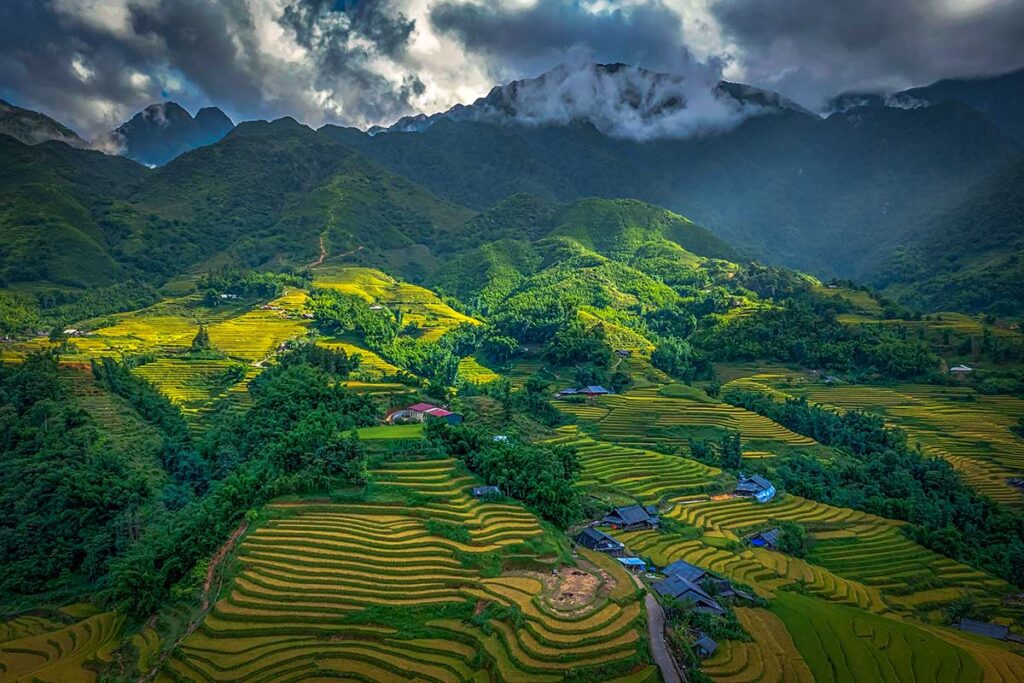
Trekking tour to most beautiful part of Sapa
Local Vietnam offers Sapa trekking tours to these popular areas that use more off the beaten track trails. This way, you can enjoy the epic views while having a less touristy experience. Let us know your preferences and we can tailor the perfect trek for you. Request your Sapa trekking tour here.
Off the Beaten Track Routes: These areas are also stunning, with villages of ethnic people and terraced rice fields. The fields may not be as large as in the more popular areas, but they are still beautiful. Off the beaten track routes go to villages like Sa Seng, Hang Da, Hau Thau, Giang Ta Chai, and Ban Ho Village.
8. Fansipan trekking
Besides the trekking through rice fields, there is one other trekking in Sapa you can do: Fansipan mountain. This trekking route can be done from 1 to 3 day. In 1 day is only for very fit people and you have to start very early in the morning. Most people choose the 2 day trek, which you will sleep close to the summit overnight.
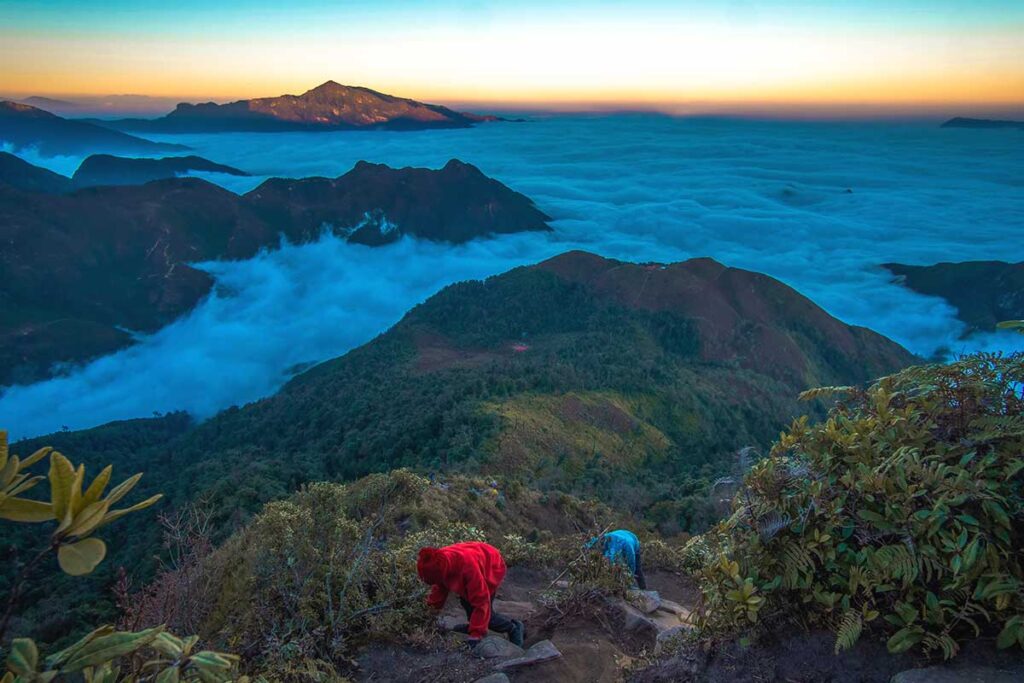
Clibming Fansiapn is a great sense of achievenment, as it is the highest mountain in Vietnam. Having that said, you should only choose this option if you are really into mountain hiking. What makes Sapa unique are its terraced rice fields and ethnic groups, and you will miss out on this on this trek. Also, Fansipan is regularly in the clouds, meaning you might don’t have the view you wish for. Alternatliv you can opt for the cable car from Sapa town. Which cost you less time and can add it to your Sapa itinerary besides your valley trekking.
9. How to arrange your trekking tour
Through a travel agent
This is the easiest way to arrange your trekking in Sapa. We at Local Vietnam can take care of everything for you, including transfers between Hanoi and Sapa (or any other destination), your Sapa trekking tour based on your preferences (whether you want a group or private tour, a short hike, or a long multi-day trek). We can arrange local homestays or comfortable lodges, and anything in between. This way, everything is organized before you even arrive in Sapa. Request your customized Sapa trekking tour here.
Arrange in Sapa
If you prefer to arrange your Sapa trekking tour once you are in Sapa, there are several options available. Hotels, resorts, homestays, hostels, and travel agents all offer Sapa trekking tours. Make sure to check carefully if the trekking tour matches your expectations. Alternatively, local ethnic people may approach you in Sapa offering their trekking services. This can also happen when walking along Muong Hoa Road. Be clear about the cost and length of the trekking before agreeing to their services.
How to prepare for your trekking in Sapa
Here are some essential tips to ensure you are well-prepared for your Sapa trekking adventure.
10. What to bring on your trek
Pack light to avoid carrying too much weight. For a one-day trek, a small, waterproof backpack is ideal. Include a lightweight rain jacket that you can easily store in your backpack in case of rain or cold weather. Carry a small medkit with blister plasters, a phone, camera, and extra batteries.
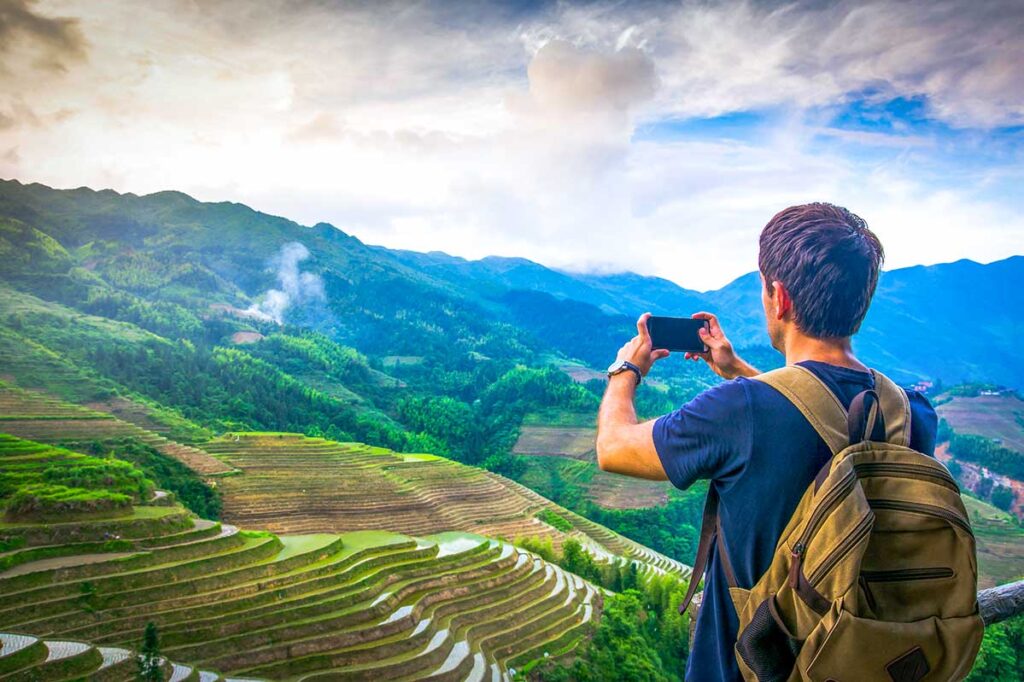
For overnight treks, bring an extra pair of clothes and toiletries. Keep your pack light, as you will need to carry it throughout your trek. Bring a small amount of money for buying drinks, herbal baths, or rice wine at homestays.
11. Wear appropriate footwear
Big hiking boots are not necessary unless you plan to hike for an extended period. Instead, bring proper walking shoes, preferably waterproof, as Sapa trekking routes can be muddy and wet.
12. Bring snacks and energy bars
There are no shops along the Sapa trekking routes. While tours often include meals and water, you might need extra energy from snacks. Bring small cash to buy drinks and snacks at homestays along the route, especially for multi-day hikes where you don’t want to carry extra drinks for 2 or 3 days.
13. Check weather forecast
If the weather is expected to be very hot, bring an extra set of clothes and swimwear for a dip in a natural pool or waterfall. Although tour guides usually provide water, bring extra on hot days to stay hydrated. If rain is predicted, ensure you have the right protection. Note that rain forecasts often mean one hard shower rather than constant rain. On rainy days, still bring sunscreen and sun protection as the sun can quickly follow a heavy downpour.
Tips for during your trekking in Sapa
Here are some tips to help you make the most of your Sapa trekking experience.
14. Respect local customs and traditions
During your trek, you will encounter local ethnic groups who live in the area. Their lifestyles may differ significantly from your own. Respect their ways of life and ask for permission before taking photos of them. Remember that the rice fields are their livelihood, so avoid stepping into them.

You may have local ethnic people join you on your trek, offering help through muddy paths and difficult terrain. They might later offer to sell you locally made products. If you are not interested, politely decline with a smile. It’s best to handle this yourself rather than asking your guide to intervene, as the guide may be related to or from the same village as these locals.
15. Be prepared for weather changes
Especially during the rainy season, be prepared for sudden rain. Forecasts indicating rain all day often mean there is a high chance of rain at some point, usually in short but intense bursts. After these showers, it usually dries up and becomes hot again. In winter, the temperature can vary significantly, becoming warm during the day while trekking and chilly in the evening. Wear layers to easily adjust to the changing weather conditions.
